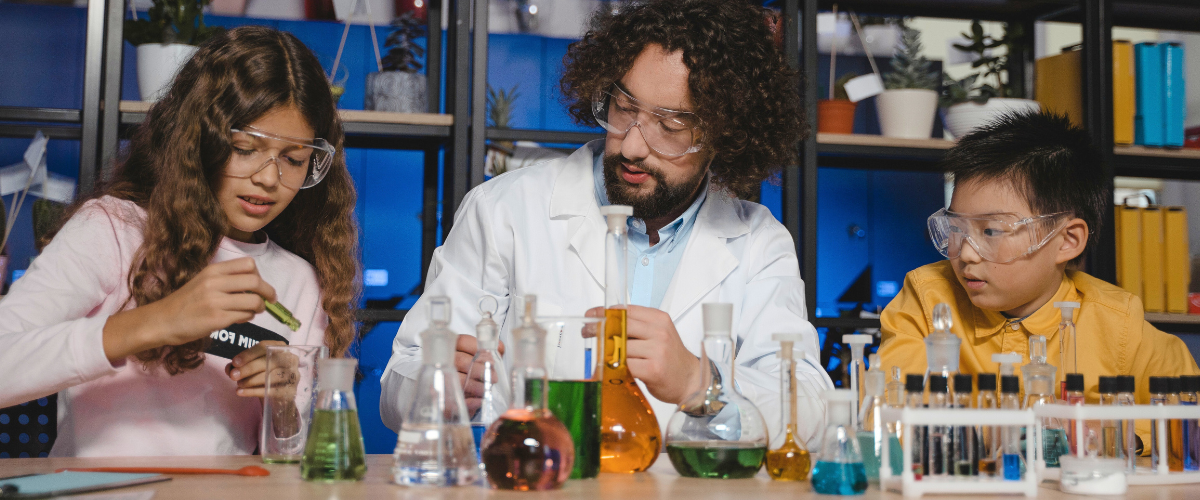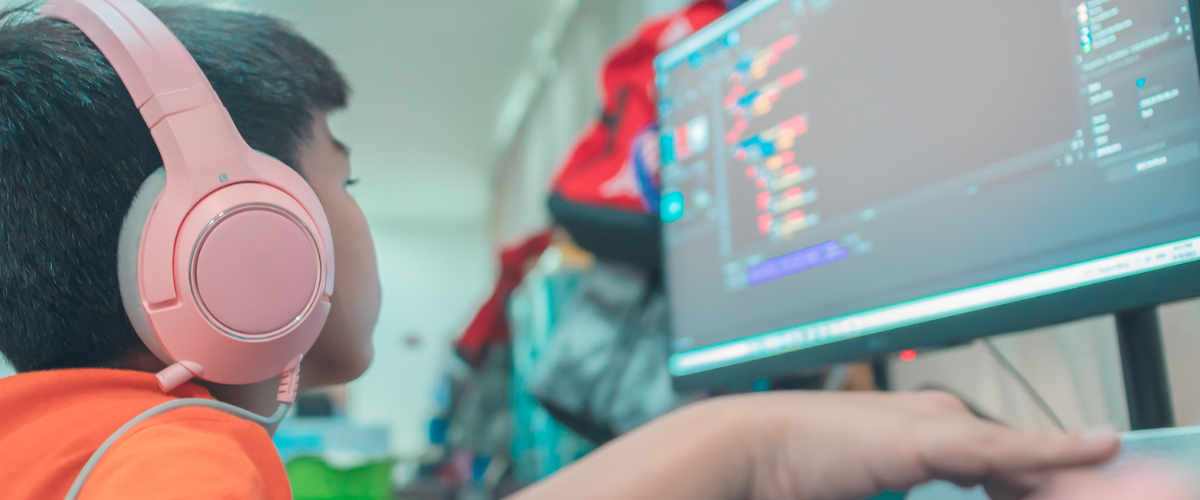Science can be a tough subject for parents to teach or reinforce at home. After all, science often involves abstract concepts and tough vocabulary. Maybe your kids and teens have a hard time wrapping their heads around the laws of physics or the periodic table.
As a parent, you might struggle to understand some concepts or explain them clearly. But fear not—it's easy to get kids and teens excited about science with some fun science experiments.
Why science experiments for kids matter
Kids need more science and STEAM in their lives. Science experiments are an easy way to bring science to life for your kids because it’s fun, hands-on learning. Experiments are engaging, participatory, and exciting. Science experiments help kids see and grasp abstract concepts.
Experiments are also low-pressure; you can't fail at them. Even when things don't turn out as expected, you've gotten your hands dirty and learned something new! Likewise, science experiments are a great way to encourage your child or teen's critical thinking and inquiry skills.
10 amazing experiments to try at home
Finding the right science experiments for kids can be a challenge for busy parents and homeschoolers. So we've compiled 10 of our favorite low-prep experiments to try at home. You can use them as a complement to your child or teen's curriculum or science classes.
Build a paper bridge
Image credit: kidsactivitiesblog.com
Eager to try a physics experiment? All you need is
- Two disposable cups
- A piece of construction paper
- A load of pennies
Challenge your kids to build a bridge that can hold as many pennies as possible. Hint: Try folding the paper in different ways!
Battle with a marshmallow catapult
Image credit: hellowonderful.co
Little kids and teens alike love this catapult engineering challenge. It's a great way to incorporate STEAM learning with history classes too. Plan to make this catapult when you're studying the Middle Ages and re-enact a historic battle.
All you need is
- Disposable spoons
- Craft sticks
- Rubber bands
- Marshmallows
Make a stack of craft sticks and bind them on both sides with rubber bands. Then, lay one craft stick under the stack and one disposable spoon on top of it. Bind the spoon and stick together at their bottom ends. Attach the spoon to the stack of sticks with another band. Your kids are ready to load up the marshmallows and fire away!
Learn about inertia with coins
Inertia is an important concept for learners interested in Space Science to understand. This quick activity will help younger kids understand how the law of inertia works. All you need is
- A clear drinking glass
- Five quarters
- A small strip of cardboard
- Water
Fill the glass about ¾ full with water. Place the cardboard strip over the top, and have your kids stack five quarters on the cardboard. Now, flick the cardboard as hard as you can. If you flick hard enough, the coins will maintain their current position and fall straight into the glass. It's an amazing illustration of a tough physics concept!
Make a glass Bottle Xylophone
Image credit: science-sparks.com
This classic xylophone experiment helps kids understand the concept of pitch. You'll need
- Five glass bottles of the same size
- Food dye
- Water
- Wooden and metal spoons
Using a measure, have your kids fill the first bottle with 10 ml of water, the second with 20 ml, and so forth until all five bottles are filled. You can add a drop of food coloring to each bottle to make the water volume easy to see.
Put the bottles in a row, and hit the top of each with a wooden spoon. Point out how the amount of water in the bottle alters the pitch (highness or lowness) of the sound. You can even play a song on your xylophone!
Make flowers with chromatography
Image credit: BuggyandBuddy.com
Chromatography is the process of separating the different pigments of ink. It's a great way to show kids that inks and dyes are made up of a mix of different colors and not just a single shade. For this coffee filter flower experiment, you'll need
- A mug
- A coffee filter
- A bit of water
Ask your kids or teens to draw a thick circle on the bottom of a coffee filter with a felt tip pen. Fold the coffee filter in half, then fold it in half again so it looks like a cone. Put a small amount of water in the bottom of a shallow mug. Set the cone in the water pointy side down and watch as the ink pigments slowly travel up the filter to make beautiful 'flowers.'
Run a sunscreen test
Image credit: tonyastaab.com
This is the perfect experiment for kids who hate wearing sunscreen because it shows just how well it works to protect our skin. All you need is
- Liquid sunscreen
- Construction paper
- Paintbrushes
Have your kids paint designs on construction paper with sunscreen. Hang them outside in the sun for a full day, then bring them inside. Ask your kids what they notice about the paper. They should see that the areas they painted with sunscreen will still be bright, while the unprotected areas will have faded a bit.
Make a layered density column
Image credit: beardedscienceguy.com
This layering experiment is a great way to demonstrate what density is. All you need is
- A turkey baster
- Tall glass tube or drinking glass
- Three to seven liquids of different densities. You could use juice, water, oil, honey, corn syrup, or anything other liquid in your pantry.
Slowly put the first liquid into the tube using a turkey baster. Rinse out the baster and add your next liquid. Keep going until you have a beautifully layered density column.
Build an egg-eating monster
Image credit: kitchenpantryscientist.com
If your kids and teens like weird science, they'll love this wacky experiment. You need
- A hard-boiled egg
- A glass bottle with a neck slightly smaller than your egg
- Birthday candles
- Matches
First, decorate a bottle to look like a monster, with the bottle's opening as the monster's mouth.
Then, peel a hard-boiled egg and hold it in your hand. Stick a birthday candle in the wide end of the egg and light it. Gently place the mouth of the bottle over the lit candle and lower it until it touches the eggs. When the candle goes out, the egg should get sucked into the bottle thanks to the change in air pressure.
Create carbonated lemonade
Image credit: learnwithplayathome.com
In this simple experiment, you'll mix a base and an acid to make carbonation. You'll need
- 1-2 lemons
- A teaspoon of baking soda
- Cold water
- A few teaspoons of sugar
- A glass
- A juicer
Start by having your kids juice the lemons–this is your acid. Slowly add one teaspoon of baking soda–this is your base. The reaction should start on its own, but you can make it even more exciting by stirring the liquid.
You can stop the experiment there, or you can add a few teaspoons of sugar and some water to make a fizzing lemonade drink.
Experiment with invisible ink
Have kids who want to be spies? You can complement their favorite Forensic Science classes with this invisible ink experiment. You need
- A plain piece of white paper
- Real lemon juice
- A cup of water
- A cotton swab
- A light source like a flashlight or lamp
Combine about ¼ cup of lemon juice and a few drops of water in a cup. Using a cotton swab dipped in the lemon mixture, draw or write a secret message on the plain piece of paper. Allow the paper to dry completely. Have your kids hold their dried papers up to a bright lamp or flashlight — the secret message should be visible!
More ways to get your kids interested in science
Hands-on experiments aren't the only way to get your kids interested in science. You can also help kids and teens develop a love of science by
Kids and teens tend to be more interested in what they're learning when they choose the topic themselves. Empower your kids by letting them pick their own Outschool STEM classes.
Outschool is here to support your kids whether they want to participate in clubs or do hands-on science. There's something here for every learner.


.svg)
.svg)







